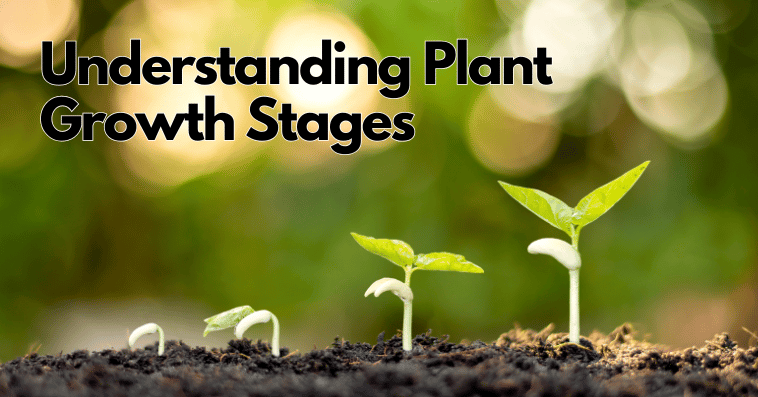Whether you're a beginner or an experienced gardener, understanding the stages of plant growth is crucial for nurturing your plants and ensuring a bountiful garden. Each phase of a plant’s life — from seed to harvest — requires specific care, nutrients, and environmental conditions. By aligning your gardening practices with the plant’s developmental stage, you can maximize health, yield, and beauty.
In this comprehensive guide, we’ll walk you through all the critical plant growth stages, common gardening mistakes, tips to support your plants at each step, and a recommendation for where to buy top-quality seeds, tools, and fertilizers —PaudheWale, your go-to gardening partner.
Why Knowing the Plant Growth Stages Matters
Many gardeners water, fertilize, and prune their plants without understanding the growth cycle. This can lead to undernourished roots, stunted growth, poor flowering, and pest infestation. Knowing what your plant needs—and when—is the difference between a healthy, thriving plant and a struggling one.
Here’s a breakdown of the five major plant growth stages that every gardener should understand.
🌿 Stage 1: Seed Germination
🔍 What Happens:
Germination marks the beginning of a plant's life. Once a seed is exposed to water, warmth, and oxygen, it begins to sprout. The seed coat cracks open, and the radicle (first root) emerges, followed by the shoot that eventually becomes the stem.
✅ Gardener's To-Do:
Use high-quality seeds for better germination rates.
Maintain consistent moisture—not soggy, just damp.
Provide warmth; most seeds germinate best between 18–24°C.
Avoid direct sunlight until sprouts appear.
🔥 Pro Tip:
Use a seed starting mix instead of regular soil for better drainage and aeration. You can find organic seed kits on PaudheWale for a successful start.
🌿 Stage 2: Seedling Stage
🔍 What Happens:
This is the baby plant phase. The first true leaves (cotyledons) emerge, and the plant starts photosynthesizing to create energy.
✅ Gardener's To-Do:
Ensure adequate sunlight—at least 4–6 hours of indirect light.
Water gently and avoid wetting the leaves to prevent fungal growth.
Watch for damping-off disease and pests.
🌟 Must-Have:
Invest in biodegradable seedling trays and mild liquid fertilizer for a strong foundation. PaudheWale offers beginner-friendly plant starter kits that include all essentials.
🌿 Stage 3: Vegetative Growth
🔍 What Happens:
This is the most active growth phase, where the plant focuses on developing leaves, stems, and roots. During this stage, plants need more nitrogen to support foliage growth.
✅ Gardener's To-Do:
Use nitrogen-rich fertilizer every two weeks.
Prune excess branches to promote airflow and healthy structure.
Ensure your plants get at least 6 hours of sunlight daily.
Water deeply but less frequently to promote root development.
🌿 Best Picks:
Try vermicompost or seaweed extract fertilizer, available at PaudheWale, to boost vegetative development naturally.
🌸 Stage 4: Budding and Flowering
🔍 What Happens:
The plant now shifts energy from foliage to producing flowers or buds. This is a crucial stage, especially for fruit-bearing or ornamental plants.
✅ Gardener's To-Do:
Reduce nitrogen and increase phosphorus and potassium in your fertilizer.
Stake plants if needed to support flowering branches.
Remove dead or faded flowers to encourage more blooming.
🛒 Fertilizer Tip:
Use bloom boosters rich in phosphorus, like bone meal or banana compost. PaudheWale stocks organic flower fertilizers tailored for this stage.
🍅 Stage 5: Fruiting and Maturity
🔍 What Happens:
In this final phase, pollinated flowers develop into fruits or vegetables, and plants prepare for seed dispersal or harvest.
✅ Gardener's To-Do:
Water consistently—especially during fruiting—to avoid issues like blossom end rot.
Use low-nitrogen, high-potassium fertilizer.
Harvest fruits when they are fully ripe to encourage further yield.
🌾 Bonus:
Fruiting plants such as tomatoes, chillies, or cucumbers love potassium. Use organic potash or compost tea. Buy it online at PaudheWale with doorstep delivery.
Factors That Affect Plant Growth at Every Stage
To ensure successful growth, monitor these key factors:
Light: Match plant needs with sunlight exposure. Use grow lights indoors if needed.
Water: Too much or too little can stunt growth. Follow a proper schedule.
Soil Health: Use nutrient-rich, well-draining soil with organic matter.
Nutrients: Each stage requires a different nutrient ratio.
Temperature: Sudden changes can slow growth or cause stress.
Understanding Macronutrients in Each Stage
| Stage | Key Nutrient | Function |
| Germination | Phosphorus | Root development |
| Seedling | Nitrogen | Leaf and stem growth |
| Vegetative | Nitrogen | Overall foliage development |
| Flowering | Phosphorus | Flower and bud production |
| Fruiting | Potassium | Fruit size and sweetness |
Using a stage-wise fertilizer strategy improves plant vitality and yield.
Common Mistakes to Avoid
Overwatering seedlings, causing rot or fungal diseases.
Using the wrong fertilizer at the wrong time.
Ignoring pest control, especially during flowering.
Crowding plants, which affects airflow and light absorption.
Avoid these and your garden will thank you with vibrant growth!
Where to Buy Gardening Essentials?
Creating a thriving garden requires more than love—it needs the right tools, seeds, and care products. That’s where PaudheWale comes in.
Here’s what you can shop from PaudheWale:
✅ High-germination seeds
✅ Organic fertilizers tailored to each growth stage
✅ Indoor/outdoor planters
✅ Grow kits for beginners
✅ Pest control sprays and compost kits
✅ Expert gardening advice & doorstep delivery
No matter the size of your space, PaudheWale makes gardening simple, sustainable, and successful.

